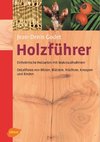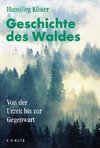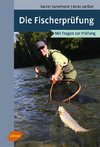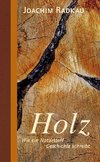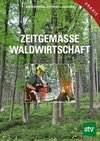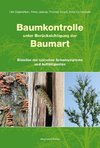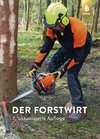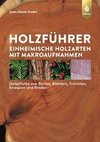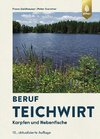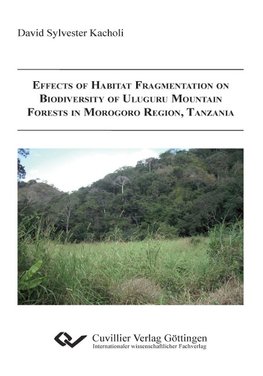
-
 Anglický jazyk
Anglický jazyk
Effects of Habitat Fragmentation on Biodiversity of Uluguru Mountain Forests in Morogoro Region, Tanzania
Autor: David Sylvester Kachol
Uluguru Mountains is one of the Eastern Arc Mountain blocks that stretch from Taita Hills in Kenya to Udzungwa Mountains in south-central Tanzania. The Uluguru Mountains contain several forest fragments, which are recognized as important biodiversity hotspots.... Viac o knihe
Na objednávku, dodanie 2-4 týždne
27.81 €
bežná cena: 30.90 €
O knihe
Uluguru Mountains is one of the Eastern Arc Mountain blocks that stretch from Taita Hills in Kenya to Udzungwa Mountains in south-central Tanzania. The Uluguru Mountains contain several forest fragments, which are recognized as important biodiversity hotspots. The population pressure and encroachment threatens their biodiversity values. This study analyses (1) species richness, diversity, floristic similarity and structure of trees species (DBH = 10 cm) in the forest fragments in Uluguru, (2) Understory species composition and natural regeneration of the fragments (3) changes in species richness, diversity and tree density along the edge-interior gradient in the fragments and (4) indigenous tree use, use values and human population impacts on tree density and species richness in Uluguru forest fragments.
In the overstory layer (i.e. DBH = 10 cm) examination of 900 individual trees revealed 101 species, 73 genera and 31 families. Fabaceae and Moraceae were the most speciose and important families in terms of familial importance value (FIV). The five species with the highest species importance value (IVI) were Ehretia amoena, Khaya anthotheca, Synsepalum cerasiferum, Sorindeia madagascariensis, Diospyros squarrosa, all accounting for 27 % of the total IVI. Of the total observed species, 31 % had up to two individuals while 15 % occurred only once in all the sample plots. The studied forests differed significantly in their species richness (26 - 93 species ha-1), tree density (85 - 390 stems ha-1), basal area (3 - 24 m2 ha-1) and diversity indices (Shannon-Wiener 2.50 - 4.02; Fishers 6.8 - 35.5; and Simpson 9.4 - 63.1). The forest fragment size revealed positive correlation with species richness (r = 0.92), trees density (r = 0.66) and basal area (r = 0.28). In general, the larger forests (Kilengwe and Kimboza) had higher species richness, which might be due to high environmental heterogeneity within the forests. However, the small fragments should be given priority in conservation to avoid loss of species. The dendogram revealed four clusters of forests with low similarity between them, the closer the forests were to one another, the more similar in floristic composition. The significant negative association between geographical distance and floristic similarity among forest pairs was confirmed by correlation test (r = -0.43, p < 0.001). Although, all studied forests showed good regeneration pattern, more attention on conservation should be paid to rare, threatened species and those with lower IVI.
In the understory layer, a total of 2119 seedlings, 1798 small saplings and 2585 large saplings representing 91, 102 and 104 species belonging to 28, 32 and 30 families respectively were recorded in the studied forests. Fabaceae and Moraceae were the most speciose families in the the entire understory compartments. Sorindeia madagascariensis, Scorodophloeus fischeri, Diospyros squarrosa and Ehretia amoena appeared in the top ten species with the highest IVI in all the three compartments. The forests varied significantly in terms of their species richness, diversity indices and structural characteristics in all the three compartments. The overall frequency distribution of the species from the three forest compartments revealed high species richness in the two lower frequency classes (i.e. < 20 % and 20-40 %) in all the forests indicating a high degree of floristic heterogeneity and the presence of rare species within the forests. Also, this study revealed the understory layer being richer than overstory in all the forest fragments. The overall mean species richness for understory was 59 species ha-1 while overstory had 47 species ha-1. The Sørensen coefficients of similarity between understory and overstory layers ranged from 0.53 to 0.77, and were higher within fragments than between them. Though, all forests displayed good regeneration, some species like Dalbergia melanoxylon, Pterocarpus angolensis, Pandanus rabaiensis, Millettia sacleuxii, Pouteria altissima, Allanblackia stuhlmannii revealed poor regeneration, hence require due attention.
- Vydavateľstvo: Cuvillier
- Rok vydania: 2013
- Formát: Paperback
- Rozmer: 210 x 148 mm
- Jazyk: Anglický jazyk
- ISBN: 9783954043644
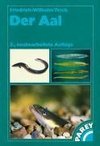
 Nemecký jazyk
Nemecký jazyk 